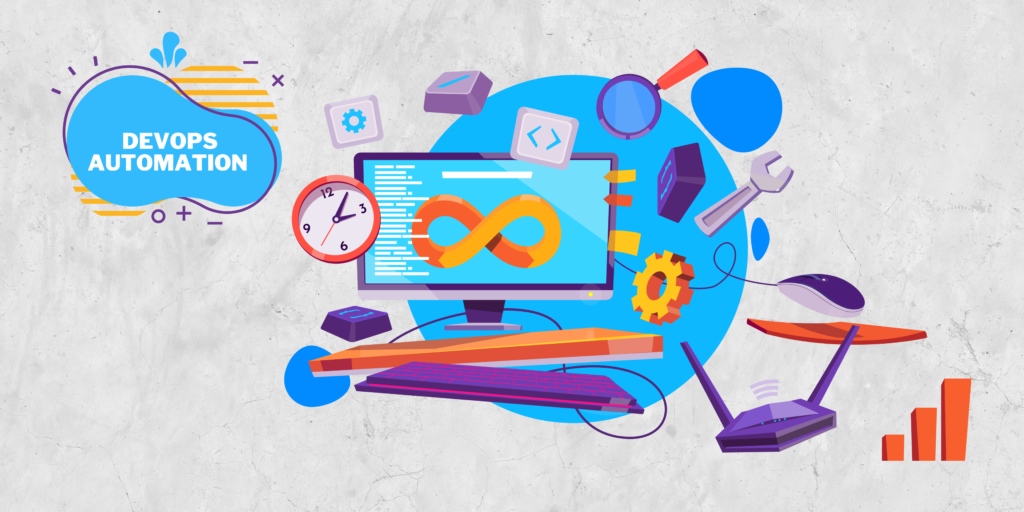Unlocking Efficiency and Success with DevOps Automation

In today’s fast-paced world of software development and IT operations, the need for streamlined processes and efficient collaboration is paramount. This is where DevOps Automation steps in, revolutionizing the way organizations build, deploy, and manage software. In this blog post, we’ll delve into what DevOps Automation is, why it’s crucial, the benefits it offers, provide a list of popular DevOps Automation tools, and outline best practices for its successful implementation, complete with examples.
What is DevOps Automation?
DevOps Automation is a set of practices and tools that automate and integrate the processes of software development and IT operations. It’s a response to the growing need for faster software delivery, continuous integration, and continuous deployment (CI/CD), and it focuses on removing manual, time-consuming tasks in the software development lifecycle.
Automated processes in DevOps can encompass everything from code building and testing to deployment and infrastructure management. The aim is to reduce human errors, accelerate development cycles, and enhance collaboration between development and operations teams.
Why is DevOps Automation Important?
- Speed and Efficiency: Automation speeds up repetitive and time-consuming tasks, leading to faster development cycles and more efficient operations.
- Consistency: Automation ensures consistent processes and configurations, reducing the risk of human error.
- Collaboration: DevOps Automation encourages collaboration between development and operations teams, fostering a culture of shared responsibility.
- Quality Assurance: Automated testing and deployment pipelines improve the quality of software by identifying and addressing issues early in the development process.
- Scalability: Automation makes it easier to scale infrastructure and applications to meet growing demands.
Benefits of Implementing DevOps Automation
- Reduced Time to Market: Faster development and deployment lead to quicker releases and a competitive advantage.
- Enhanced Quality: Automated testing and continuous monitoring improve the quality and reliability of software.
- Cost Savings: Automation reduces manual labor, saving time and money.
- Risk Mitigation: Automation minimizes the risk of human errors and security vulnerabilities.
- Improved Collaboration: Teams work together more effectively, leading to better communication and problem-solving.
List of DevOps Automation Tools
- Jenkins: An open-source automation server used for building, testing, and deploying code.
- Ansible: An automation tool that simplifies configuration management and application deployment.
- Docker: A platform for developing, shipping, and running applications in containers.
- Kubernetes: An open-source container orchestration platform for automating the deployment, scaling, and management of containerized applications.
- Puppet: A configuration management tool that automates infrastructure provisioning and management.
Key Guidelines for Effective DevOps Automation
Achieving success in DevOps automation hinges on adhering to essential best practices. Here are some pivotal guidelines to consider:
- Set Clear Objectives: Clearly articulate the goals and aims of your DevOps automation initiatives. Identify the specific areas and processes that stand to benefit from automation. A well-defined vision and roadmap will steer your automation endeavors effectively.
- Commence Small and Evolve: Initiate with a manageable scope for automation. Select a specific process or task that can be easily automated and delivers substantial value. Beginning with a modest project allows you to learn and enhance your automation practices before tackling more intricate processes.
- Foster a Collaborative Culture: DevOps automation extends beyond tools and technologies; it necessitates a culture of collaboration. Promote open communication, trust, and shared responsibility among development, operations, and other teams involved in the software delivery process. Additionally, cultivate a mindset of perpetual learning and improvement.
- Implement Version Control: Employ a version control system, such as Git, to manage your infrastructure code, application code, scripts, and configurations. This ensures change tracking, fosters collaboration, and provides the capability to revert to prior versions if required.
- Embrace Infrastructure as Code (IaC): Embody the principle of Infrastructure as Code, treating infrastructure configurations as code. Utilize tools like Terraform or CloudFormation to programmatically define and provision infrastructure resources. This permits versioning, reproducibility, and effortless scalability of infrastructure.
- Adopt Continuous Integration and Delivery (CI/CD): Automate your build, test, and deployment processes through CI/CD pipelines. Establish automated tests to validate code modifications and guarantee that new features or bug fixes do not introduce regressions. Automate application deployments across various environments to ensure consistency and mitigate manual errors.
- Prioritize Automated Testing: To guarantee the requisite quality and stability of developing software, it’s imperative to invest in DevOps automated testing at multiple levels. Employ testing frameworks and tools that seamlessly integrate into your CI/CD pipelines. Strive for comprehensive test coverage and execute tests automatically with each code change.
- Monitor and Enhance Observability: Institute automated monitoring and observability practices to gain insights into application and infrastructure performance, availability, and health. Leverage tools like Prometheus, Grafana, or the ELK Stack to collect and visualize metrics, logs, and traces. Implement alerts and notifications to proactively pinpoint and address issues.
- Promote Continuous Learning and Improvement: Encourage a culture of ongoing learning and improvement. Analyze data and metrics gathered from automation processes to identify bottlenecks, inefficiencies, and areas for optimization. Regularly scrutinize and refine your automation workflows to stay in step with evolving requirements and technologies.
- Integrate Security and Compliance: From the outset, incorporate security and compliance practices into your automation processes. Integrate security scanning, vulnerability assessments, and security testing as core components of your CI/CD pipelines. Ensure that automated processes adhere to industry regulations and standards.
Remember, successful DevOps automation is a journey that unfolds gradually. It calls for a continuous, iterative approach, ongoing learning, and adaptability to changing needs. Regularly assess your automation efforts, solicit feedback from teams, and refine your practices to drive efficiency and deliver value to your organization.”

Leave a Reply